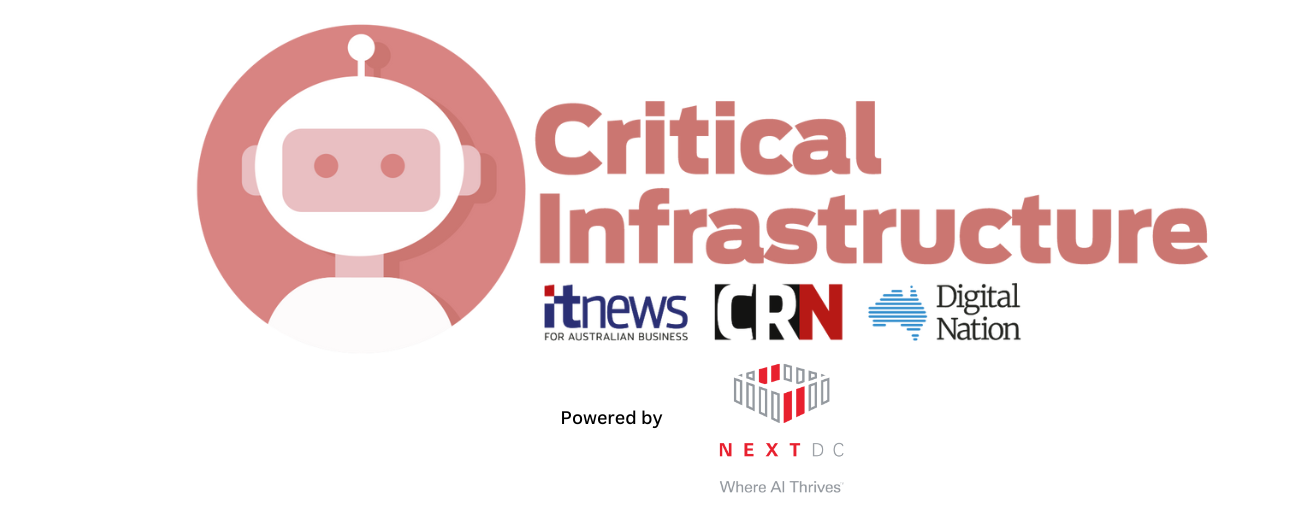
As an industry in transition, Australia’s critical infrastructure providers have an immediate need for new technologies that can help them respond to rapidly shifting requirements. However, the very nature of their work – providing critical services – also makes them averse to experimental and untested technologies.
AI’s potential to add value in critical infrastructure is vast, covering everything from improving customer service through to streamlining complex asset management and helping defend against cyber threats – many of which are also now powered by AI.
This technology is also likely to play a crucial to helping providers adapt to significant market shifts, such as Australia’s transition to renewable energy.
AI at the core
For Andrew Haddad, chief information officer at energy company AGL, his organisation’s engagement with AI is suitably broad, including preventative maintenance programs, churn reduction, and improved customer case management, and it is designed to keep AGL on the leading edge of AI adoption.
“We don’t want to be a fast follower in AI,” Haddad said.

“We have gotten moving, and we want to accelerate the capabilities and the use of AI across the business. We want to be a leader in AI across the energy sector.”
AGL today has 450 licences of Microsoft Copilot across its organisation. This is giving the AGL team ongoing experience with AI while providing access to new functionality as it is released.
For example, Haddad cited one instance where his team allocated four weeks to implement a chatbot for assisting with expense claims, only to see it up and running in 10 minutes.
By spreading AI knowledge across the organisation Haddad is also able to ensure that business users can see the value that AI delivers, and able to bring ideas to life quickly through hackathons.
“We are working on real business problems, predominantly in the customer and retail space,” Haddad said.
“The aim is to do one a month. Not all of those will make their way into production, but that is all part of helping to uplift the capability and knowledge across the team.
“AGL is a large organisation – we have everything from generation, wholesale, trading, and retail, and so there are undoubtedly opportunities across the business, firstly in harmonising data across the organisation, and then applying different forms of AI.”
And when it comes to the infrastructure layer, Haddad believes AI will also be important in helping AGL navigate its way through Australia’s energy transition.
“If you think about the number of generation assets that we have today, that will grow, and there is certainly a need for automating the orchestration of these assets as weather patterns change,” Haddad said.
“I certainly expect to be using tools such as AI in these areas to help is really maximise the utilisation of these assets, which in turn will also improve operational effectiveness.” - Andrew Haddad, CIO. AGL
Solving complex problems

The strategy being deployed at AGL presents a snapshot of the kinds of projects that will be essential for supporting Australia’s critical infrastructure sector, as it strives to optimise operations, enhance efficiency, and drive innovation – without risking delivery.
At Viva Energy, chief digital and transformation officer Amanda Fleming said AI is being deployed across activities including refining, importing, and distribution of fuels and lubricants, and is also assisting in operating Viva’s convenience retail offering.
“We see AI playing a critical role in the operation and maintenance of our operational facilities,” Fleming said.

“From predictive maintenance to real-time process optimisation, AI holds immense potential to revolutionise the way we operate, contributing to sustainable growth and competitiveness.
“Our developers are already using Copilot technology in trials to deliver code quicker, which accelerates the delivery of value. In other words, AI is being adopted quickly and is likely to be rolled out in new applications across the business as we come to better understand its potential.”
One of the prime candidates for AI is at Viva’s refinery in Geelong, where it will capture and analyse temperature, pressure, vibration, and other data from the facility’s IoT network to predict when equipment might be reaching the point of failure.
“By identifying potential issues before they occur, we hope to be able to schedule maintenance proactively, minimising downtime and reducing the risk of costly unplanned shutdowns.” - Amanda Fleming, CDTO, Viva Energy
Managing critical complexity
The high cost of maintenance and downtime for critical infrastructure providers often sees AI projects tie directly into IoT deployments, with AI providing the computation grunt required to extract insights from the vast amounts of data these networks generate. Hence AI is becoming a more common component of these asset intensive organisations.
Another example is Melbourne Water, which each day transfers 1250 million litres of drinking water from 157,000 hectares of catchments through approximately 1100 kilometres of aqueducts and underground water mains.
According to chief information officer Lachlan Bakewell, AI technology supports decision-makers by giving them visibility into how assets behave, work, or function.
“We are open to new ways of thinking that position Melbourne Water to take advantage of new technologies and capabilities, where we judge it is safe,” Bakewell said.
“AI can expedite tasks and potentially allow for more nuance as we use our information and data.”

Bakewell said AI is already playing a role in water treatment and the maintenance of drains, and AI is being used to examine drone images taken of wetlands and the pipe network to measure changes and guide actions.
But with the quality of Melbourne’s drinking water at stake, Bakewell said Melbourne Water has strived to ensure that appropriate governance is brought to bear before any AI-related project is undertaken.
“Our process for installing AI is the same as any emergent technology, which includes careful review and testing, cyber security checks, training, and change management before deployment,” Bakewell said.
“It would be like implementing a new software system, though getting the AI governance structure right first was important. As with any emergent technology, new complexities need to be thought through and managed.”
A critical component

With the demands placed upon critical infrastructure rising constantly, there is a high likelihood that operators will have no choice other than to make greater use of AI.
“AI is here to stay - it is not just a trend,” AGL’s Haddad said.
Critical Infrastructure Champion

Data centres are adopting Green AI and smart energy management to address rising energy demands and reduce their carbon footprint. As data use and AI adoption grow, energy efficiency efforts keep carbon emissions stable, with AI optimising locations, resources, and maintenance. Green AI promotes eco-friendly algorithms to make data centres more sustainable.
State of AI Champions
We are proud to present the State of AI Report Champions, and we will showcase the work they are doing in the coming days.
.png)















